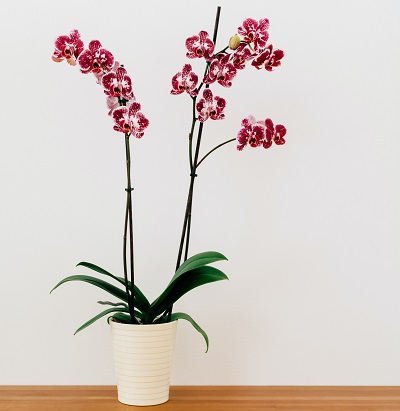
Light is necessary for all life, but plants have the unique talent of being able to harness sunlight energy and turn it into food. It is vital for a plant to get enough light to survive, and also to reproduce. And luckily for us, flowering plants accomplish reproduction by producing blossoms. For orchid lovers, enticing your plants to flower is the name of the game. The amount of light your orchid receives will largely determine whether it will bloom.
Orchid Light Requirements
As a general rule, most orchids do best in medium light, in an area that receives about 4 hours bright light daily. Producing flowers is very energetically expensive for any plant and the right amount of light is necessary for your orchid to store enough energy to fuel the production of blossoms. Without the right light levels, a plant either can’t produce enough food energy to power a blooming cycle (too little light) or it may get scorched and stressed from rapid water loss (too much light).
Ideal Light for Orchids
You can roughly determine how much light an orchid needs by the color of its leaves. For most orchid plants, the leaves should be light green in color. When exposed to sufficient light, the foliage of some orchids will darken with reddish pigments. These pigments are essentially the plant’s sunscreen, protecting it from burning. If the leaves of your orchid begin producing red pigment, it means that the plant is getting as much light as it can stand and is trying to protect itself from burning. This is the type of reaction to sun that you want to see to optimize the chances that your plant will bloom.
Too Much Light for Orchids
If the plant is getting too much light the leaves become very yellow and may wither and die. If you find this happening, move the plant to a shadier location. Sun scorching may also cause brown splotches on the leaf tips or folds. An extreme amount of light can fade the leaves or create leaf spots that are a bleached, beige color, a clear indication the plant is not thriving.
Not Enough Light for Orchids
When orchids do not receive sufficient light, the foliage often has a “healthy” dark, rich green appearance. Although this is very attractive, it is a sign that the plant is not getting the amount of light necessary for it to produce flowers. Your robust looking plant can live indefinitely with light that is lower than ideal, but it won’t bloom. Try moving it to a location with more light and watch for a change in the color of the leaves.
Provided by Suite101.com
Related Articles & Free Email Newsletter Sign Up
A Quick Tutorial in Orchid Nomenclature or “Know Who You Have!”
How to Guarantee Beautiful Paphiopedilum Blooms Every Time
To Pot or Not to Pot an Orchid, That is the Question!




Comment here